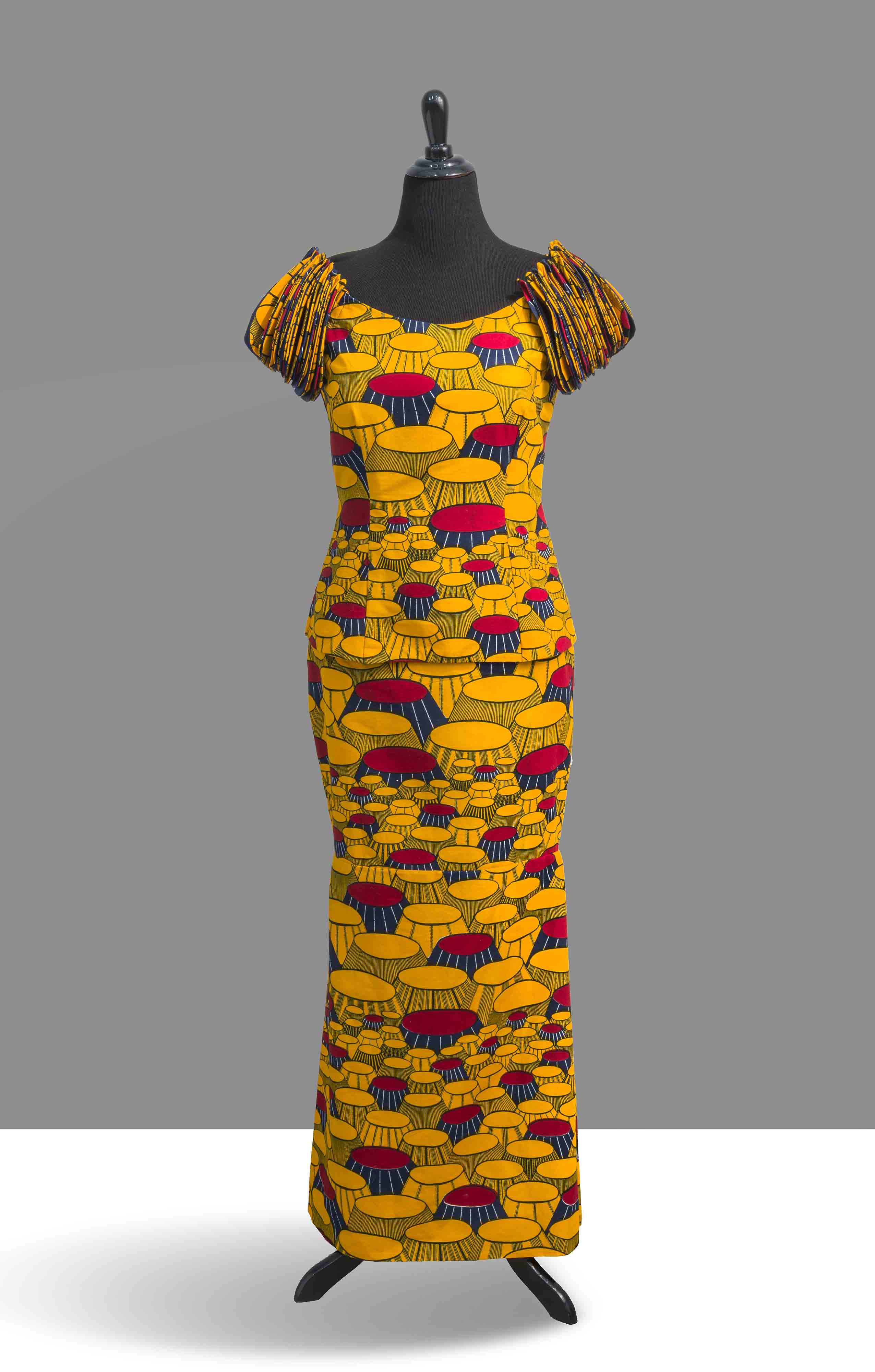
The exhibition “Wandering Spirit: African Wax Prints” will run Oct. 24 through Nov. 23 in the University of Nebraska-Lincoln’s Robert Hillestad Textiles Gallery.
Curated by Gifty Benson and organized by ExhibitsUSA/Mid-America Arts Alliance of Kansas City, Missouri, the exhibition traces the history and development of the African wax print and tells how these fabrics reflect the stories, cultures and personalities of the people who wear them.
The batik process was invented in eighth-century China, then expanded to India on the coast of Coromandel. The technique was imported to Java by traders in the 12th and 13th centuries. Batik is a Javanese word that refers to a technique of wax-resist dyeing, by which a pattern is made on both sides of cotton fabric with warm liquid wax applied by a tjanting, a small brass cup with a spout. After the wax cools and solidifies, the cloth is dyed with a primary color and the wax is removed, revealing the pattern where the wax had been.
J.B.T. Prévinaire, a Dutch cotton printing mill owner, was instrumental in developing a machine that could print imitation batiks industrially. In 1854, he unveiled “La Javanaise,” a converted French printing machine that could print an imitation of the Javanese batik using resin instead of wax. Despite the technological advance, “La Javanaise” produced imperfections in the print that did not appeal to the Javanese buying public, so European printers found themselves searching for new markets around the world. After many years of transcontinental exploratory travels and investigations, they identified Africa as the new potential market for their wax prints.
The success of wax prints in parts of Africa is driven by many factors including culture, taste and the styling preferences of African consumers. Patterns in textiles and in many other applied forms serve as important systems of communication, sending messages and referencing local proverbs and mythologies. Textiles and clothing can also convey a person’s social status and position, political convictions, ambition, marital status, ethnicity, age, gender and group affiliations. The names and stories associated with the fabrics differ from country to country and region to region.
The history of the African wax print is a history embedded in colonial trade routes and dependent on globalization in the post-colonial era. Though not originally African, these textiles are widely associated with African culture and society, and loved and identified as Africans’ own.
In conjunction with “Wandering Spirit: African Wax Prints,” the Robert Hillestad Textiles Gallery and the Department of Textiles, Merchandising and Fashion Design will host a reading and book signing by Chigozie Obioma, assistant professor of literature and creative writing at Nebraska, at 5:30 p.m. Nov. 1 in Room 11 of the Home Economics Building. The event is free and open to the public and university community. Obioma’s first novel, “The Fishermen,” was shortlisted for the 2015 Man Booker Prize for Fiction. He will read from “The Fishermen” and reflect on Nigerian culture and society. A book signing and reception will follow.
The Hillestad Gallery is part of the Department of Textiles, Merchandising and Fashion Design in the College of Education and Human Sciences. The gallery is located on the second floor of the Home Economics Building, near 35th Street and East Campus Loop. Hours are 8:30 a.m. to 4 p.m. Monday through Friday and by appointment. Admission is free. Guest parking is available near the building and metered stalls are located in the Nebraska East Union lot. For more information, click here or call 402-472-2911.













